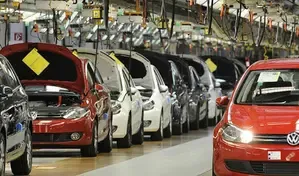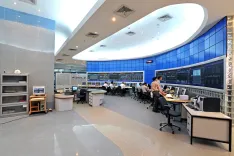Can India's Automobile Sector Drive the $5 Trillion Economy Dream?

Synopsis
Key Takeaways
- India's auto industry contributes 7.1% to GDP.
- Supports over 37 million jobs.
- PLI scheme promotes electric vehicle production.
- FAME-II scheme boosts EV adoption.
- Vehicle Scrappage Policy aims to improve air quality.
New Delhi, June 29 (NationPress) As India approaches its ambitious goal of a $5 trillion economy, the automobile industry is proving to be a vital driver of growth, contributing approximately 7.1 percent to the national GDP and nearly 49 percent to the manufacturing GDP.
Moreover, it supports over 37 million jobs and accounts for close to 8 percent of India's total exports.
This sector's performance is intricately linked to the broader economic landscape of the country.
Beyond its commercial significance, the auto industry is increasingly seen as a testament to India’s rising capabilities in global manufacturing and innovation.
By the financial year 2024-25, India has positioned itself as the third-largest automobile market worldwide by sales and the fourth-largest by production.
The country has manufactured over 31 million vehicles across various categories, including more than 5 million passenger cars, 1 million commercial vehicles, 1 million three-wheelers, and nearly 24 million two-wheelers.
In terms of exports, India has shipped around 5.7 million vehicles to markets such as Japan, Mexico, Latin America, and Africa.
This swift expansion is bolstered by government initiatives aimed at enhancing local manufacturing, diminishing imports, promoting clean technologies, and establishing India as a significant player in global supply chains.
A crucial initiative is the Production Linked Incentive (PLI) scheme for the automobile and auto components sector.
With a budget of Rs 25,938 crore, this scheme focuses on advancing electric vehicles (EVs), hydrogen vehicles, autonomous systems, and advanced vehicular technologies.
By early 2025, this initiative had attracted investment proposals exceeding Rs 67,000 crore.
It is projected to generate Rs 2.3 lakh crore in additional sales and create 750,000 direct jobs.
However, of the total $23 billion approved under PLI schemes across sectors, only $1.7 billion has been disbursed thus far, raising concerns about the pace of implementation.
Another significant initiative is the FAME-II scheme (Faster Adoption and Manufacturing of Hybrid and Electric Vehicles), introduced with a budget of Rs 11,500 crore.
This scheme supports the adoption of electric two-wheelers, three-wheelers, buses, and taxis. To date, over 1.3 million EVs have benefitted from this initiative.
Originally slated to conclude in March 2024, the scheme has been extended until March 2025 to maintain momentum in the EV sector.
To reduce reliance on imported batteries, the government has also launched a PLI scheme for Advanced Chemistry Cell (ACC) Battery Storage with an allocation of Rs 18,100 crore.
Three companies are already working on constructing battery gigafactories under this program.
This initiative is crucial as batteries constitute over 40 percent of the total cost of an EV.
The Vehicle Scrappage Policy is another essential measure aimed at phasing out old and polluting vehicles from Indian roads.
This policy is expected to enhance air quality, improve road safety, and drive demand for newer, more efficient vehicles.
The electric vehicle market in India is steadily advancing. By 2024-25, EVs represented over 6 percent of all vehicle sales, with two-wheelers and three-wheelers spearheading the trend.
In May 2025, electric car sales hit 12,304 units, surpassing the 4 percent market share for the first time—up from 2.57 percent in May 2024.









